30 Common British Birds And How To Spot Them
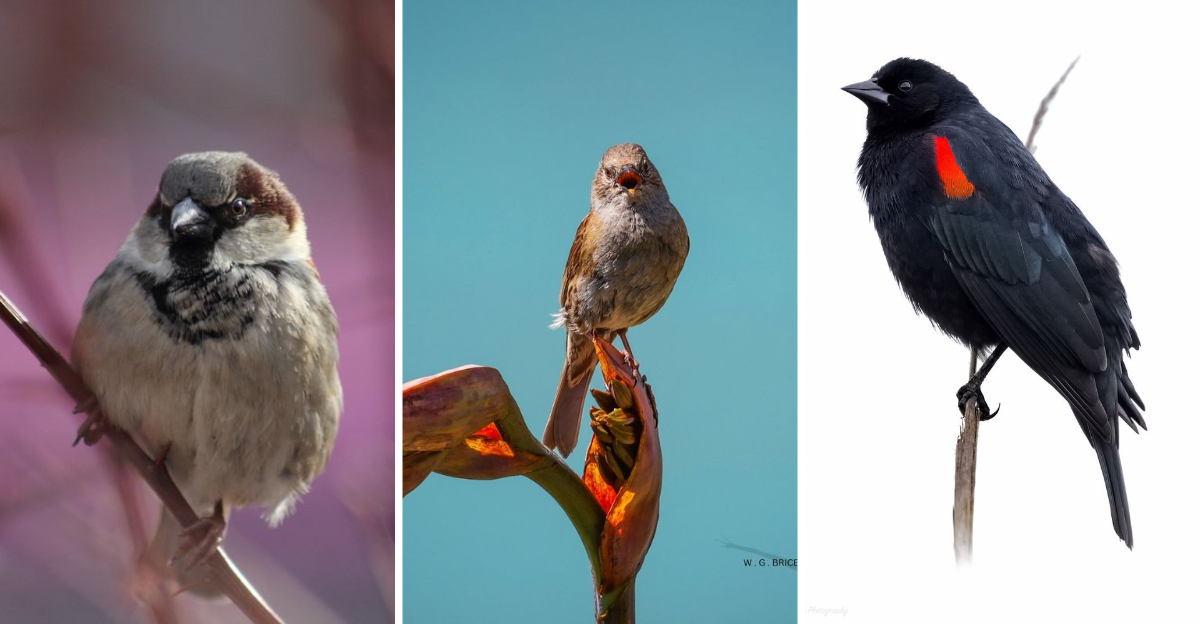
Exploring the British countryside or even your local park, you’ll likely encounter a delightful array of birds. With over 600 species recorded in the UK, bird watching can be both a relaxing and exciting hobby.
This guide introduces you to common British birds, offering insights on how to recognize them and some quirks that make them fascinating. Whether you’re a seasoned birder or a curious beginner, these descriptions will help you spot these feathered friends with ease.
1. European Robin
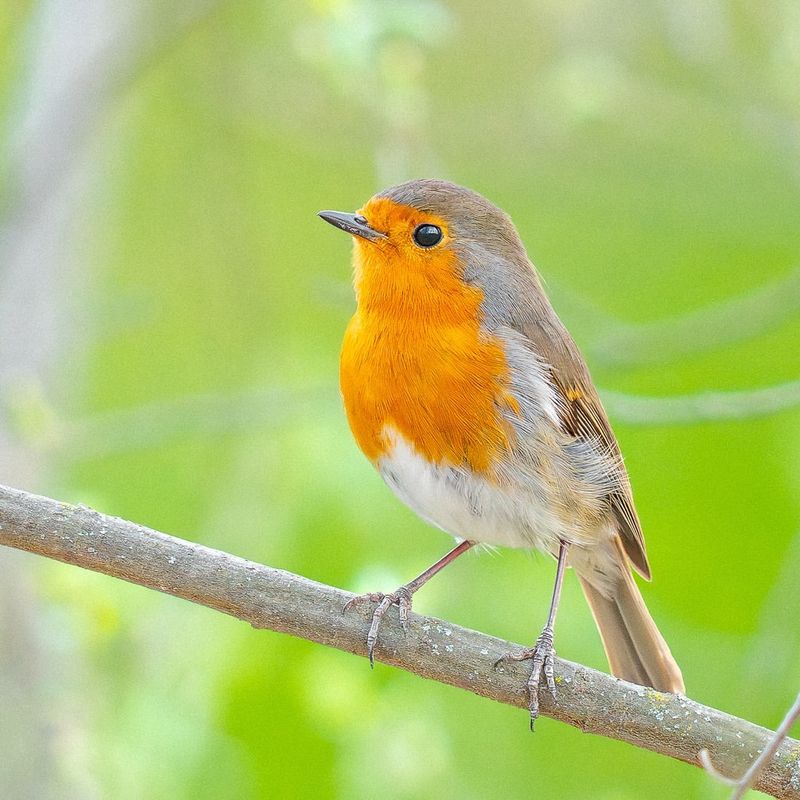
Not just a Christmas card favorite, the European Robin is adored across the UK. Its orange-red breast makes it unmistakable, even to novice birdwatchers. Robins are often seen flitting around gardens, accompanying gardeners as they turn the soil.
They are bold birds, often coming close to humans. Their melodious song is a joy to hear throughout the year, but especially during the winter months when fewer birds are singing. Robins are fiercely territorial, and you might witness their spirited defense of their turf.
If you’re lucky, a robin may even eat from your hand, showcasing their charm and confidence. Spot these delightful birds in woodlands, parks, and gardens, where they hop along the ground searching for worms and insects.
Remember, during the breeding season, male robins may sing through the night, giving nightingales a run for their money.
2. Blackbird
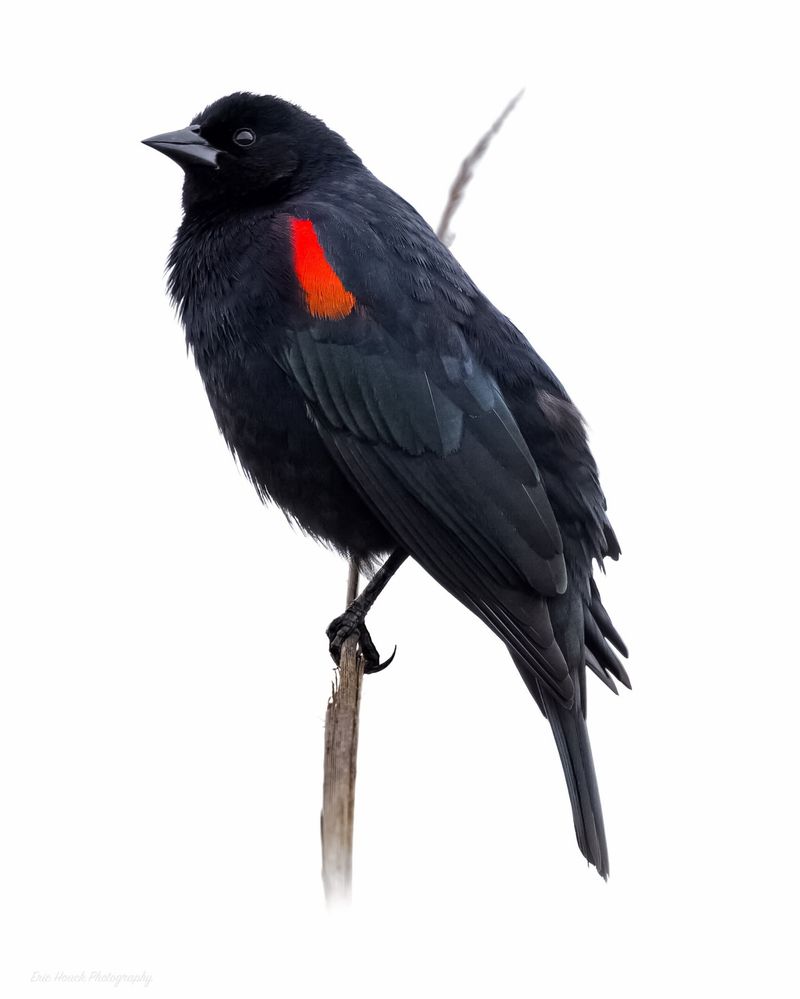
The Blackbird, with its striking black plumage and bright yellow beak, is a staple of British gardens. Males are easily identifiable, but females, with their brown coloring, can sometimes be mistaken for other species.
Blackbirds are known for their beautiful, flute-like song. These birds are versatile in their feeding habits, often seen on lawns hunting for worms or perched in trees enjoying berries. They are particularly active at dawn and dusk, serenading the day with their enchanting melodies.
Adaptable and widespread, Blackbirds thrive in a variety of habitats, from rural woodlands to city gardens. They build their nests low in shrubs or trees, often recycling materials from previous nests. Their song is a familiar soundtrack to many British lives, marking the changing seasons with their sweet serenades.
3. Blue Tit
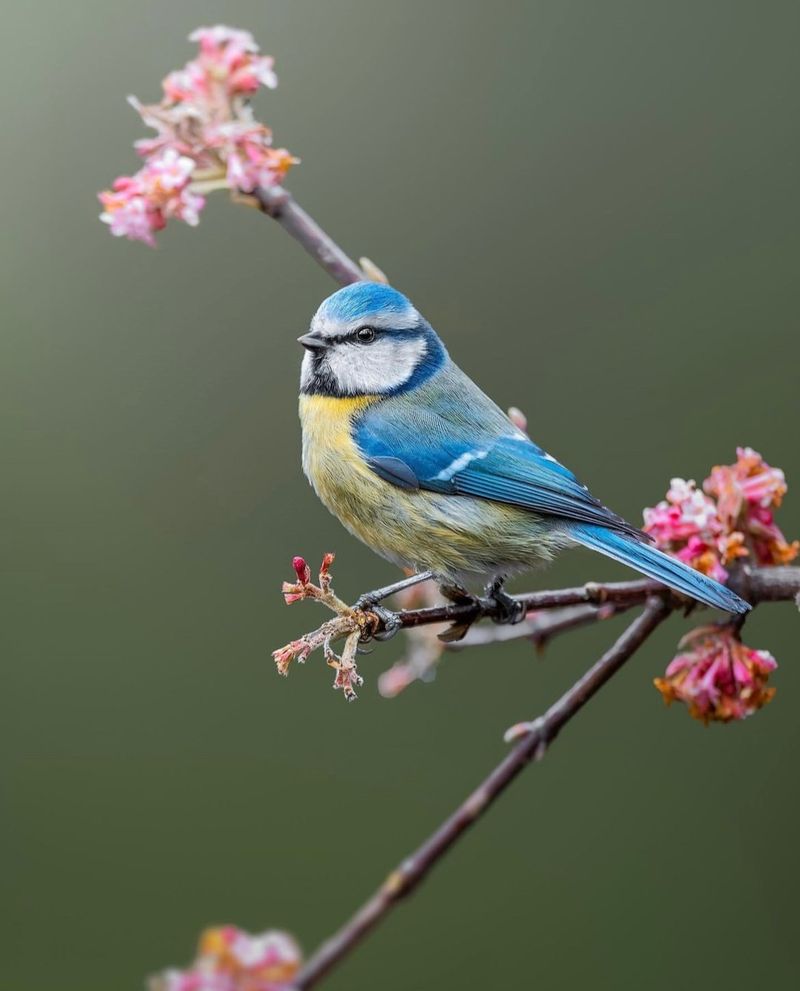
The delightful Blue Tit is a small bird with a big personality. Its bright blue and yellow plumage makes it easily recognizable, adding a splash of color to any garden. These acrobatic birds are often seen darting around feeders, hanging upside down to reach their snacks.
Blue Tits are incredibly resourceful, known to peck open milk bottle tops in the past to sip the cream. They are frequent visitors to bird tables and feeders, especially in winter when food is scarce. Despite their small size, they are feisty and will defend their feeding spots against larger birds.
These birds are not just garden dwellers; they also inhabit woodlands and hedgerows. During the breeding season, they occupy nest boxes, raising their chicks with remarkable dedication. Their cheerful presence and lively antics bring joy to any birdwatcher lucky enough to observe them.
4. Chaffinch
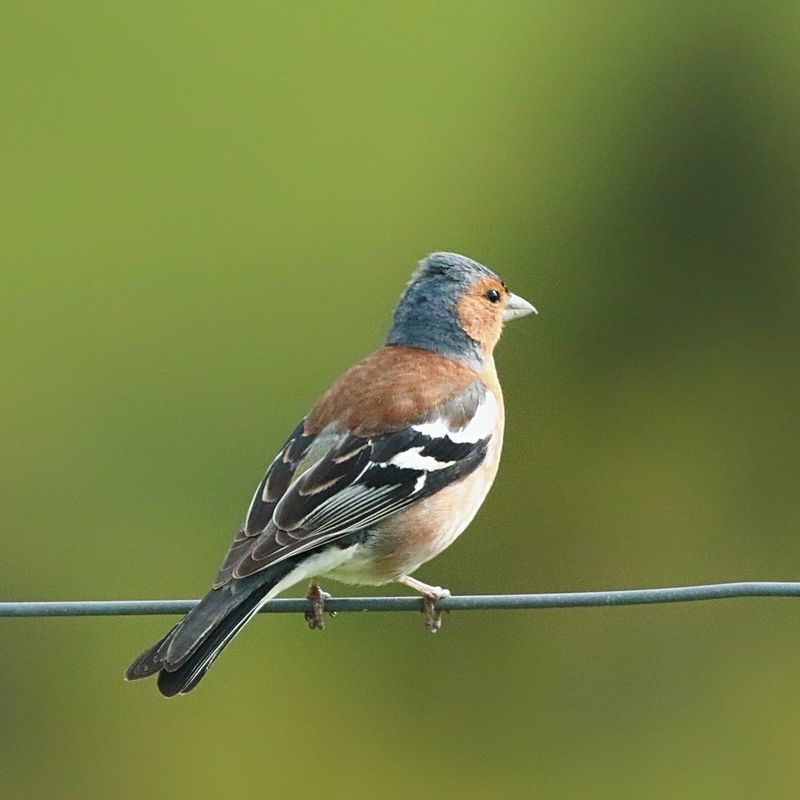
Chaffinches, with their distinctive plumage, are among the UK’s most colorful garden visitors. Males have a striking pinkish face and chest with a blue-grey cap, while females sport more subdued tones. These birds are a delight to spot, often foraging on the ground for seeds.
Their song is a familiar sound in the countryside, a series of cheerful, descending notes. Chaffinches are adaptable, found in gardens, woodlands, and parks, where they feed on seeds and insects. They are social birds, often seen in mixed flocks with other finches.
In spring, male Chaffinches establish territories with a mix of visual displays and song. The construction of their neat, cup-shaped nests in trees is a testament to their building skills. Observing Chaffinches can be a colorful and melodious experience for any bird enthusiast.
5. Great Tit
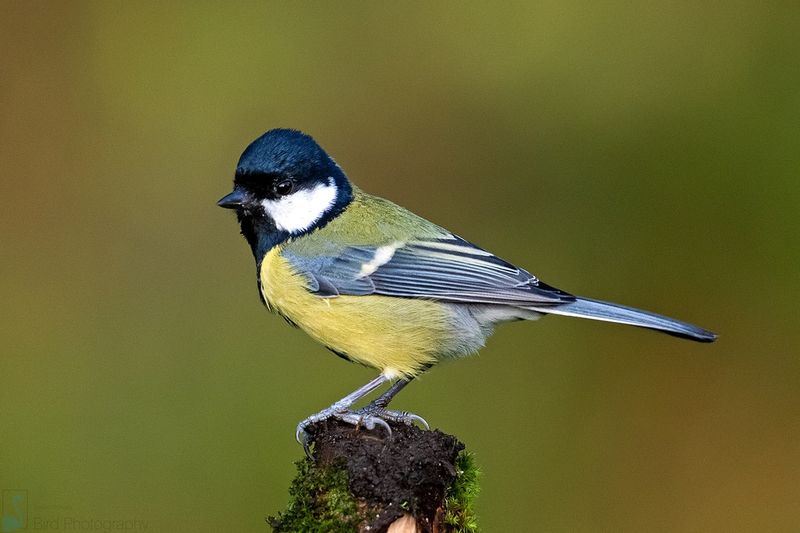
The Great Tit is the largest of the UK’s tit family, easily spotted with its bold black head, white cheeks, and vibrant green and yellow body. Known for their wide variety of calls, Great Tits are often heard before they are seen.
These birds are highly adaptable, frequenting gardens, woodlands, and parks. They are curious and intelligent, capable of problem-solving to access food from feeders. The Great Tit’s song is a repeated two-note phrase, often compared to a bicycle pump.
In the breeding season, they occupy nest boxes or tree holes, raising large families. Despite their size, they are agile, often seen flitting through the branches in search of insects. Their presence in gardens is a testament to their adaptability and charm.
6. House Sparrow
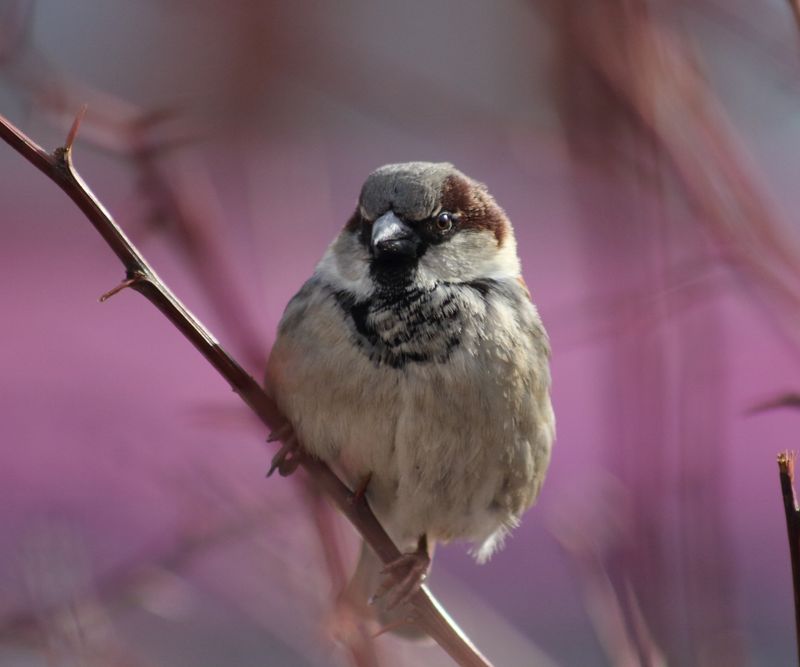
House Sparrows are familiar yet declining residents of urban and rural areas across the UK. Males are distinctive with their grey heads and black bibs, while females are more subtly marked with brown and grey. These birds are highly social, often seen in noisy flocks, chirping and foraging together.
They tend to nest in cavities in buildings, a testament to their adaptability to human environments. Despite their ubiquity, they face challenges due to changes in building practices and food availability. House Sparrows are opportunistic feeders, enjoying seeds, scraps, and insects.
Their cheerful chirping and bustling behavior bring life to any neighborhood. Efforts to provide nesting spaces and food can help support their populations, ensuring future generations can enjoy their company.
7. Woodpigeon
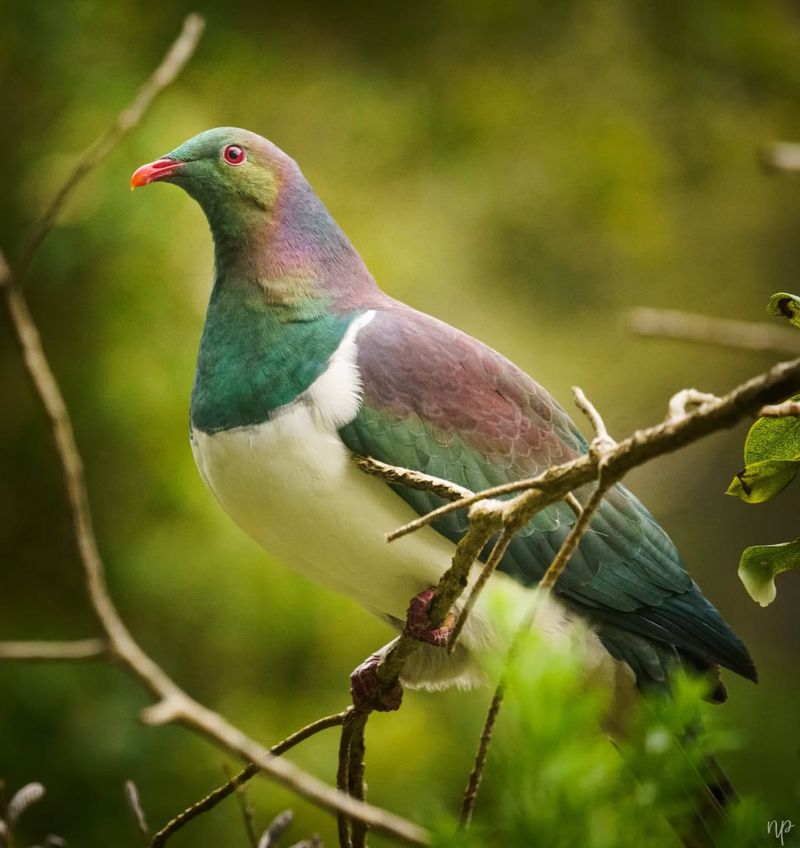
The Woodpigeon, the UK’s largest and most common pigeon, is often heard cooing softly from treetops. With a distinctive white neck patch and a plump body, they are easily recognized. Woodpigeons are frequent visitors to gardens, parks, and farmland.
Their gentle cooing is a soothing sound, often associated with lazy summer afternoons. Despite their size, they are surprisingly nimble, able to make swift escapes when startled. Their flight is characterized by a loud clapping sound as they take off.
Woodpigeons feed on seeds, fruits, and crops, sometimes causing issues for farmers. However, their presence in gardens is often welcomed, as they help control weed growth by feasting on weed seeds. Observing their behavior can provide a glimpse into the social life of these gentle giants.
8. Magpie
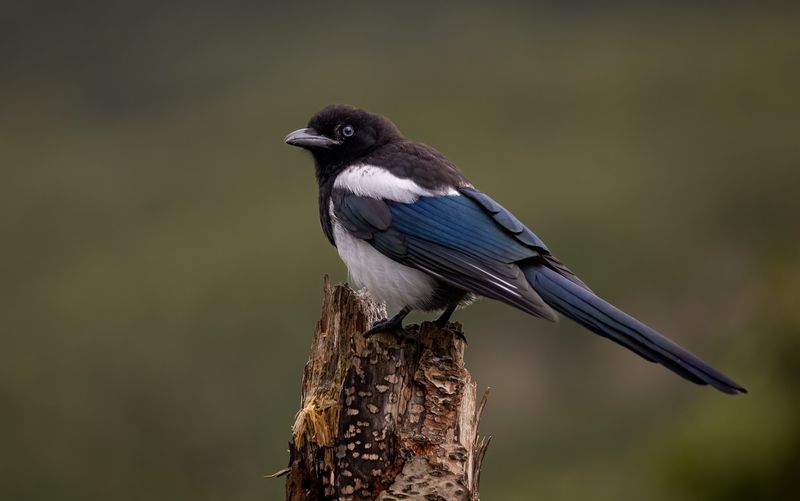
Magpies are one of the most recognizable birds in the UK, with their striking black and white plumage and long tail. Known for their intelligence and bold behavior, they are often seen in gardens and parks, strutting confidently.
These birds are part of the crow family and are highly social, usually seen in pairs or small groups. Their chattering calls are familiar sounds, and they are known for their curiosity and problem-solving abilities.
Magpies are omnivorous, feeding on insects, small mammals, and carrion, making them adaptable survivors. While they can sometimes be seen as pests, they are an integral part of the ecosystem, helping to control insect populations. Their playful antics and striking appearance make them fascinating subjects to observe.
9. Goldfinch
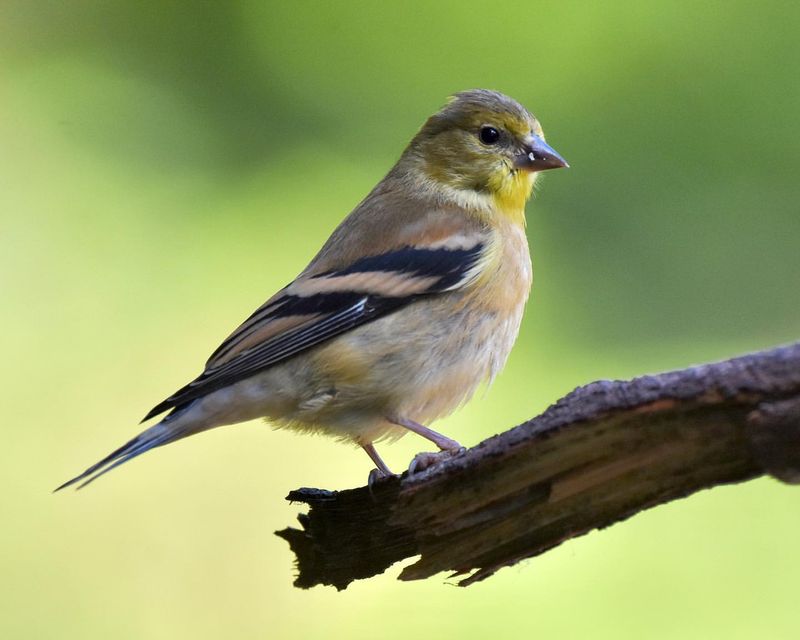
The Goldfinch, with its vibrant red face and striking yellow wing patches, is a jewel among British birds. Known for their delightful twittering song, they are often seen in small, sociable flocks. Goldfinches have a particular fondness for thistle seeds, and their acrobatic feeding habits can be a joy to watch.
They are frequent visitors to garden feeders, especially those offering nyjer seed. Their colorful plumage and cheerful demeanor make them a favorite among birdwatchers. These birds are widespread across the UK, from gardens to open countryside.
In the breeding season, their nests are often found in trees or shrubs, skillfully woven to house their young. Spotting a Goldfinch can be a bright highlight in any birdwatching adventure.
10. Song Thrush
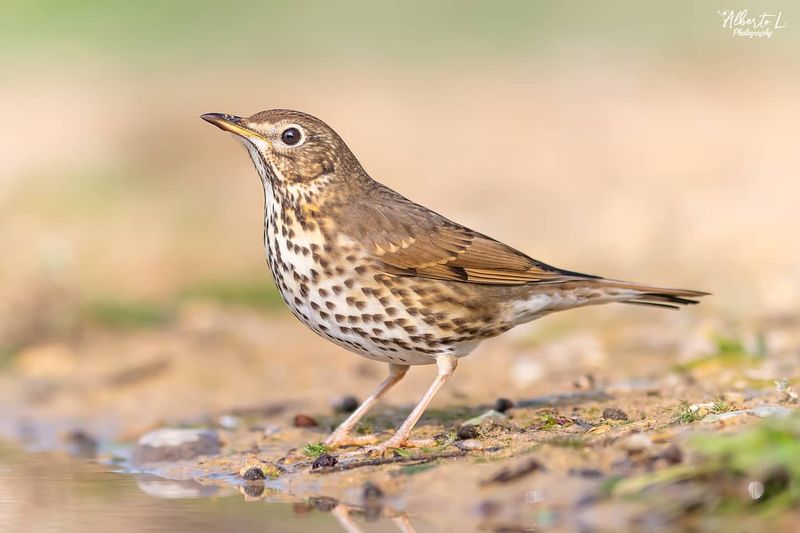
The Song Thrush is celebrated for its beautiful, repetitive song, often heard in woodlands and gardens. Recognizable by its brown upperparts and speckled breast, it is a common sight across the UK. These birds have a unique feeding habit, using stones as anvils to smash open snail shells.
This behavior is a clever adaptation, allowing them to enjoy food others might find inaccessible. Song Thrushes are often seen foraging on lawns or in leaf litter. Their nests are usually built in dense shrubs, providing protection for their young.
The Song Thrush’s melodious calls are a welcome sign of spring, marking the return of longer, warmer days. Observing their industrious foraging and listening to their song is a rewarding experience for any nature lover.
11. Starling
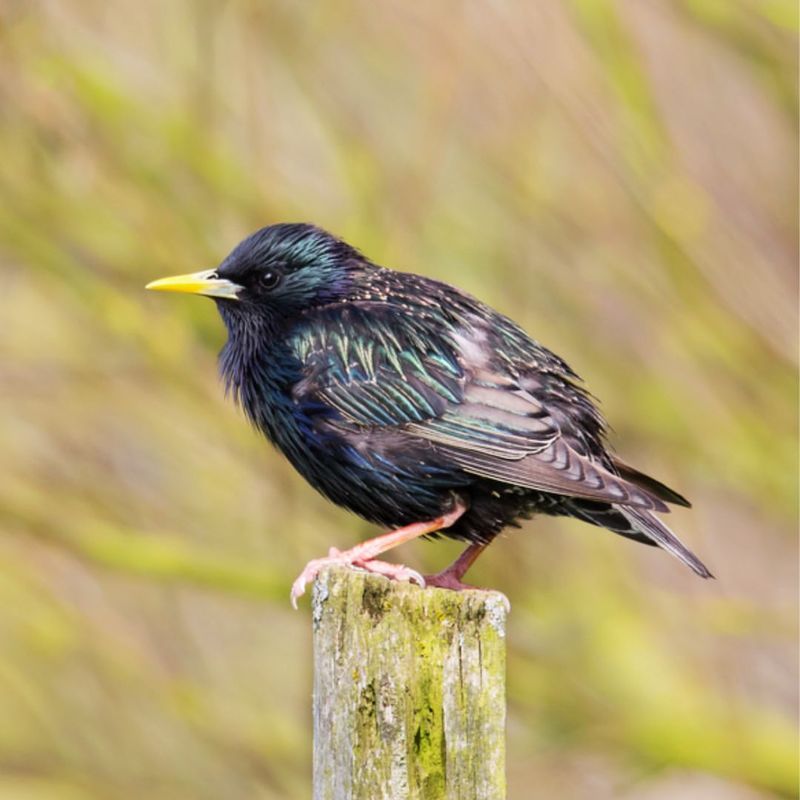
Starlings are renowned for their spectacular murmurations, where thousands of birds move in perfect synchrony. With iridescent plumage that shimmers in the sunlight, they are a common sight across the UK. These birds are highly sociable, often seen in large flocks, especially in winter.
Their chattering calls and mimicry of other sounds can be quite entertaining. Starlings feed on insects and fruits, often seen foraging on the ground or in trees. In urban areas, they are known to nest in buildings, while in rural areas, they prefer trees and hedgerows.
Despite being common, their numbers have declined, making conservation efforts important. Witnessing a Starling murmuration is a breathtaking experience, showcasing nature’s wonder.
12. Goldcrest
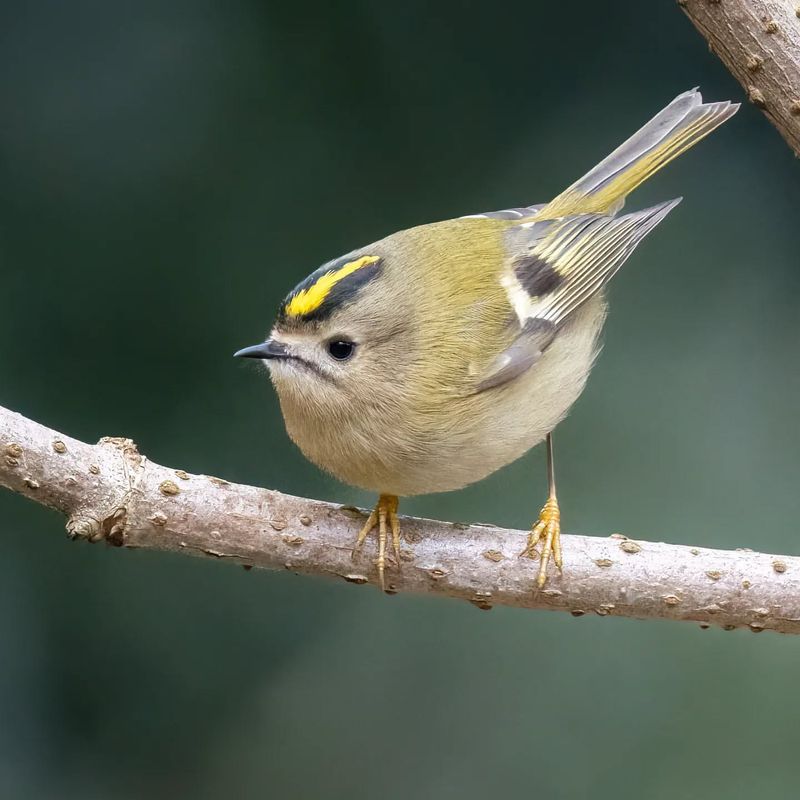
The Goldcrest, the UK’s smallest bird, is a delightful find for any birdwatcher. Weighing about the same as a 5p coin, its tiny size is matched by its vibrant crown stripe, which gives it its name. These energetic birds are often found in coniferous forests, flitting among pine needles in search of insects.
Despite their size, they are hardy, surviving harsh winters by forming mixed-species flocks with other small birds for warmth and protection. Goldcrests have a high-pitched song that can be challenging for some to hear, but once recognized, it becomes a delightful addition to any woodland walk.
Their diminutive presence and cheerful nature make them a cherished part of the UK’s avian landscape.
13. Long-Tailed Tit
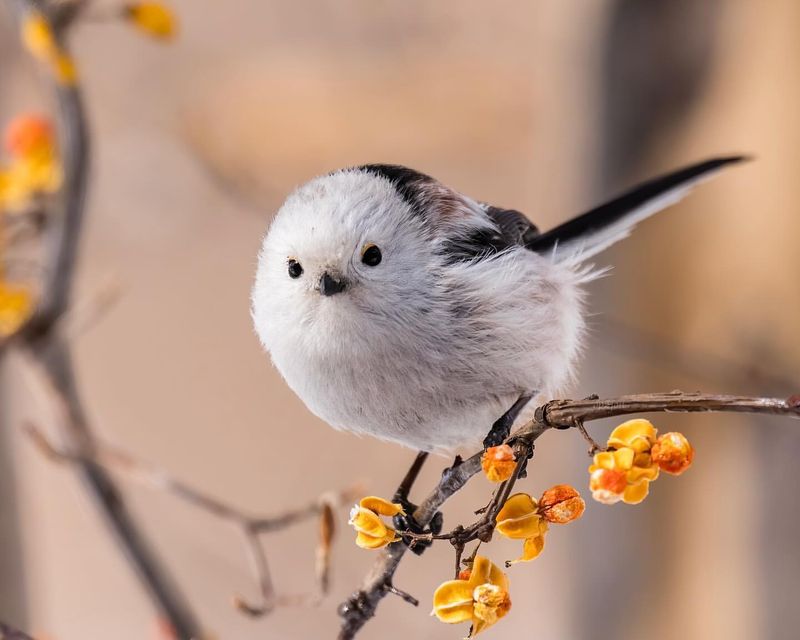
Long-tailed Tits are a charming sight with their fluffy bodies and distinctive long tails. Often seen in flocks, these sociable birds move through gardens and woodlands with delightful agility.
Their nests are marvels of avian architecture, intricately woven with moss, feathers, and spider silk, creating a flexible, expandable home. These nests are often hidden away in hedgerows or brambles, providing security for their young.
Long-tailed Tits feed on insects and seeds, frequently visiting bird feeders in gardens. Their soft, high-pitched calls are a signal of their presence, often leaving a trail of smiles in their wake. Observing a flock of these endearing birds is sure to brighten any day.
14. Collared Dove
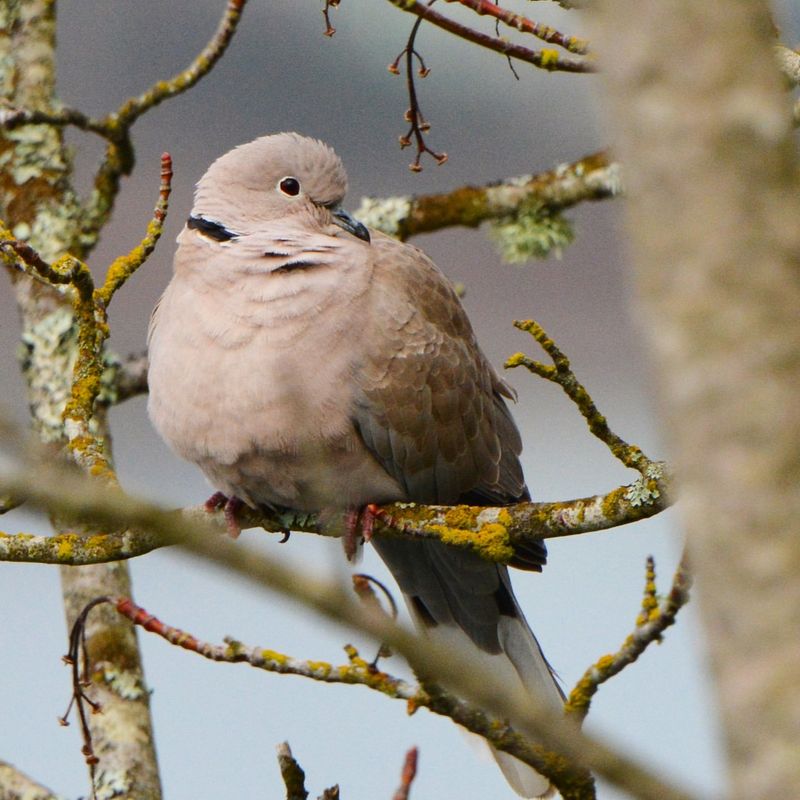
The Collared Dove, with its soft cooing and gentle appearance, is a peaceful resident of gardens and urban areas across the UK. Its light grey plumage and distinctive black neck collar make it easy to identify. These doves are relatively new to the UK, having spread from the Middle East in the 20th century.
Their adaptability has allowed them to thrive in various environments, from countryside to cityscapes. Often seen in pairs, Collared Doves feed on seeds and grains, frequently visiting bird tables. Their soothing calls add a sense of calm to any area they inhabit.
Watching their graceful flight and gentle interactions provides a serene birdwatching experience.
15. Jackdaw
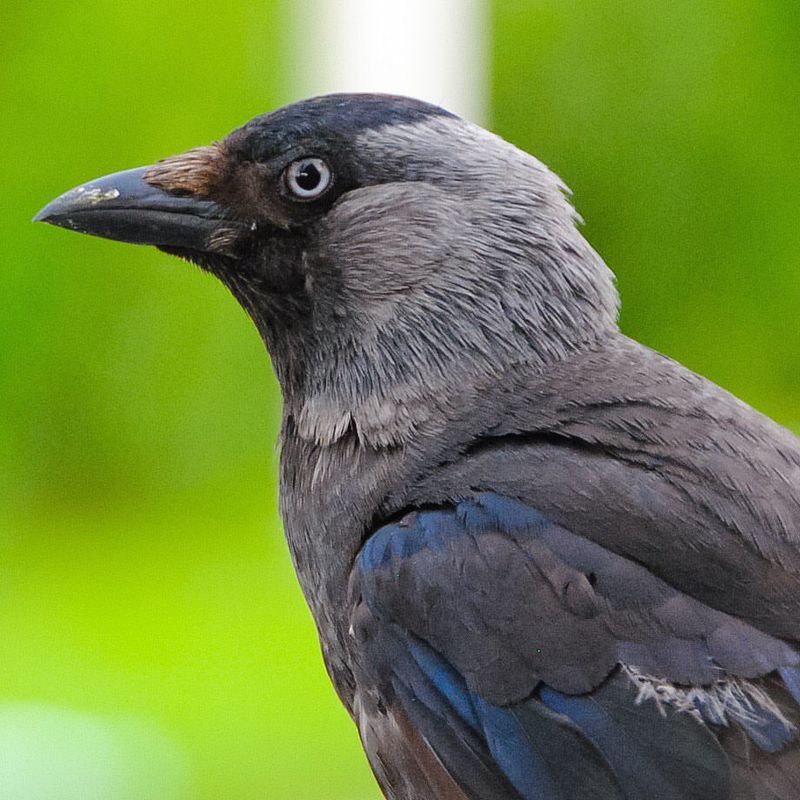
Jackdaws, with their distinctive pale eyes and glossy black feathers, are intelligent, social birds commonly found across the UK. Part of the crow family, they are often seen in pairs or small groups, engaging in lively interactions.
These birds are versatile, thriving in urban environments as well as rural areas. They nest in cavities, often selecting chimneys or buildings, which has endeared them to urban dwellers. Jackdaws are opportunistic feeders, enjoying a varied diet from insects to scraps.
Their playful nature and curious behavior make them fascinating to observe. Jackdaws are known for their ability to mimic sounds and solve puzzles, showcasing their remarkable intelligence. Their presence brings a touch of mischief and charm to any environment.
16. Wren
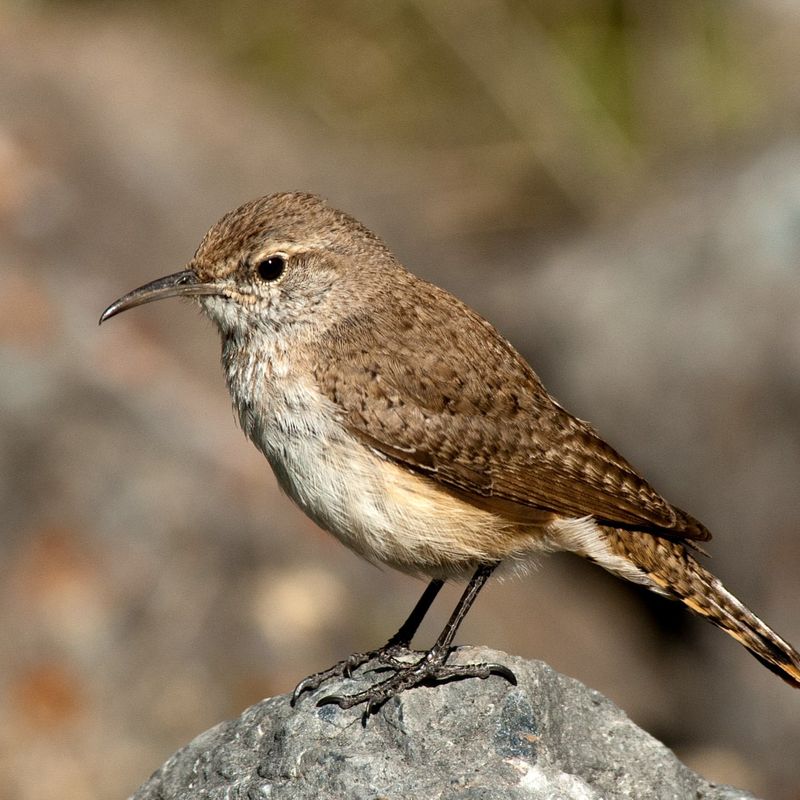
The Wren, with its explosive song and small stature, is a delightful presence in gardens and woodlands. Its tiny, round body and perky, upright tail make it easily recognizable. Despite their size, Wrens have a loud, powerful song that can be heard throughout their territory.
They are often seen flitting through undergrowth, searching for insects with remarkable energy and agility. These birds build domed nests in crevices or dense foliage, using moss and leaves for camouflage. Their versatility in habitat choice reflects their adaptability and resilience.
Observing a Wren’s industrious foraging and listening to its vibrant song is a rewarding experience for any bird enthusiast.
17. Dunnock
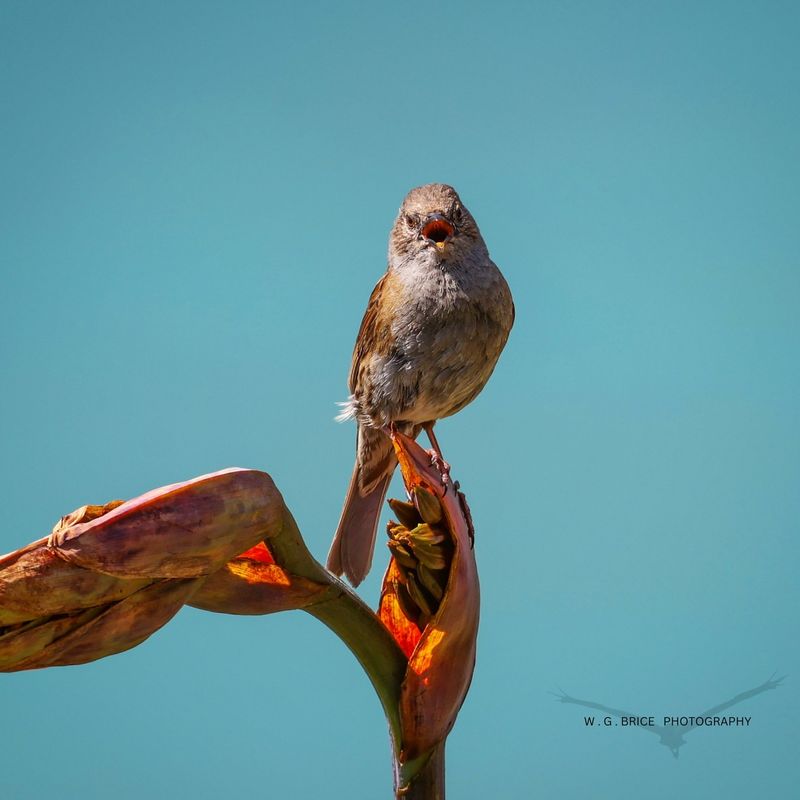
Often overlooked due to its subtle coloring, the Dunnock is a charming garden resident. Its brown and grey plumage allows it to blend into hedges and shrubs, making it a stealthy forager. Dunnocks are known for their secretive behavior, often seen skulking around the base of bushes.
Despite their shy nature, they have a beautiful, melodious song that adds to the garden’s soundtrack. These birds are interesting from a behavioral perspective, with complex social structures involving multiple mating partners.
Their nests, usually hidden in hedges, are carefully constructed with twigs and moss. Spotting a Dunnock can be a delightful surprise for any observant birdwatcher.
18. Greenfinch
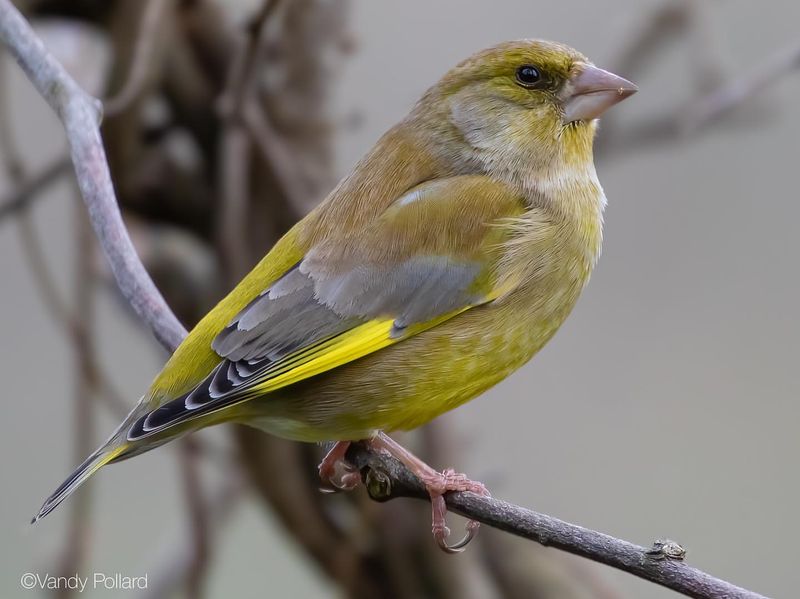
The Greenfinch, with its striking green and yellow plumage, is a vibrant addition to British gardens. Known for their strong, fluttering flight and cheerful song, they are a joy to observe. These birds are gregarious, often seen in flocks at feeders, where they enjoy seeds and grains.
In the past, their numbers declined due to disease, but conservation efforts have helped stabilize their populations. Greenfinches are adaptable, thriving in both urban and rural settings.
Their nests are usually built high in trees, providing safety for their young. Watching their lively interactions and listening to their calls can bring a sense of vitality to any garden.
19. Coal Tit
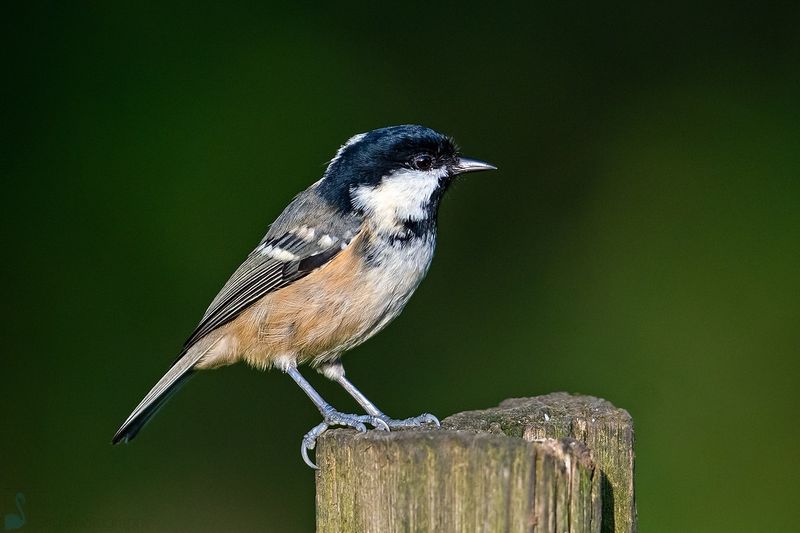
The Coal Tit, with its distinctive black cap and white nape, is a charming visitor to woodlands and gardens alike. Its small size and quick movements make it a lively presence in any setting. These birds are adept at exploiting coniferous forests, their primary habitat in the UK.
They are often seen flitting among branches, searching for insects and seeds. Coal Tits are known for their ability to store food, hiding seeds in crevices for later consumption. Their song is a series of high-pitched notes, adding a delightful soundtrack to forest walks.
Despite their diminutive size, Coal Tits are bold, often seen challenging larger birds at feeders. Their industrious nature and charming appearance make them a favorite among birdwatchers.
20. Bullfinch
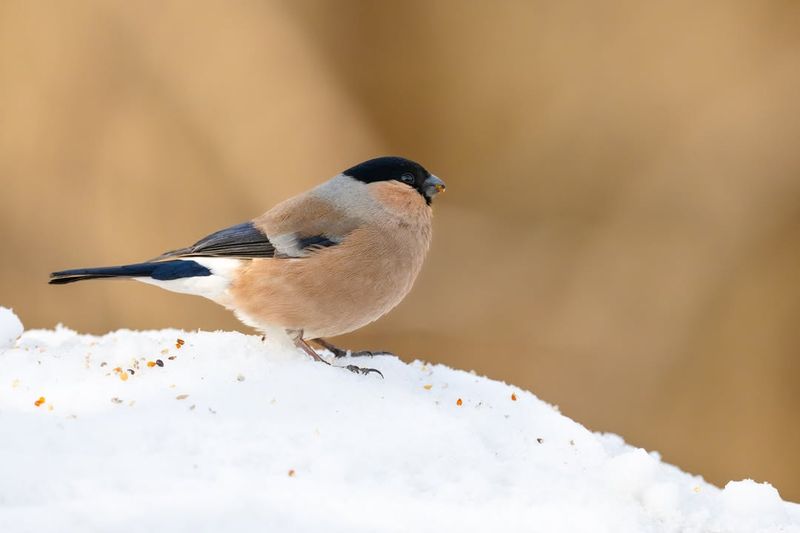
Bullfinches are striking birds, with males sporting a vibrant pinkish-red breast and black cap. These shy birds are often heard before they are seen, with their soft, piping calls. They are usually found in woodlands and orchards, where they feed on seeds and buds.
Bullfinches are known for their cautious nature, often remaining hidden in dense foliage. Despite their shyness, they are a delightful sight for any birdwatcher. Their nests are built low in bushes, carefully constructed to protect their young.
Conservation efforts have helped maintain their populations, allowing more people to enjoy their beauty. Observing a Bullfinch’s vibrant plumage and gentle demeanor can be a highlight of any nature walk.
21. Pied Wagtail
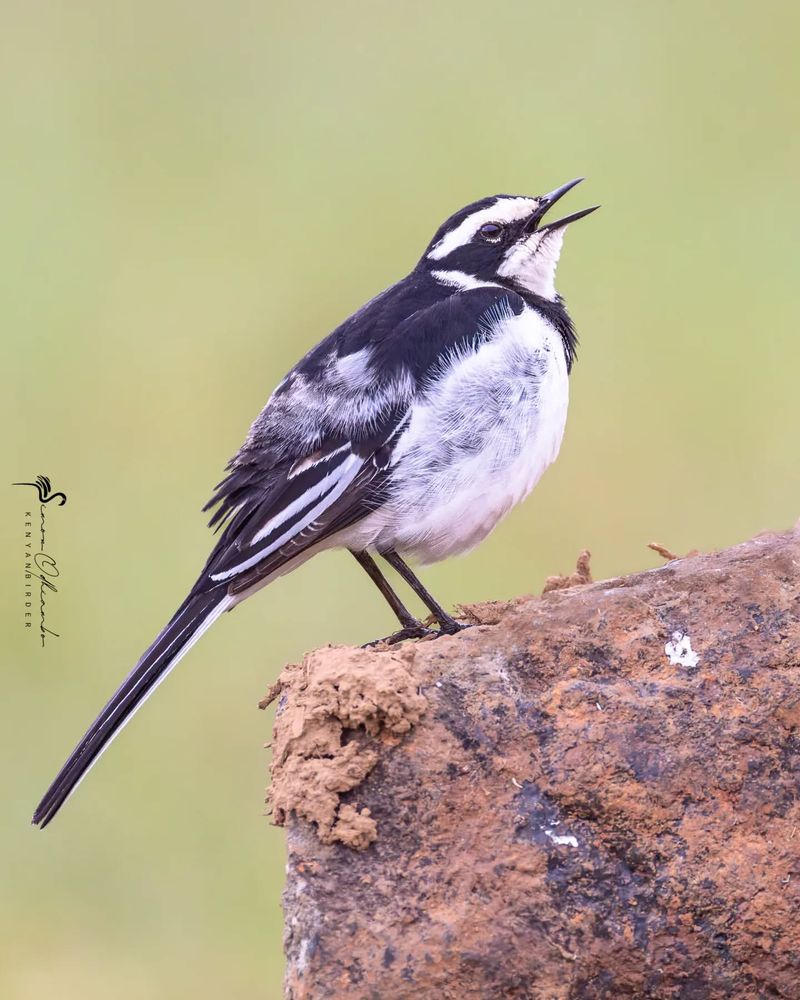
The Pied Wagtail, with its striking black and white plumage and long, constantly wagging tail, is a familiar sight in both urban and rural areas. These lively birds are often seen bobbing along pavements and riverbanks.
Their energetic movements and cheerful calls make them engaging birds to watch. Pied Wagtails are versatile feeders, enjoying insects and seeds. In winter, they form roosts in sheltered areas, sometimes numbering in the hundreds.
Their nests are built in crevices, often in walls or buildings, reflecting their adaptability to human environments. Observing their lively antics and listening to their calls can brighten even the dullest day. Their presence is a reminder of nature’s resilience in urban landscapes.
22. Rook
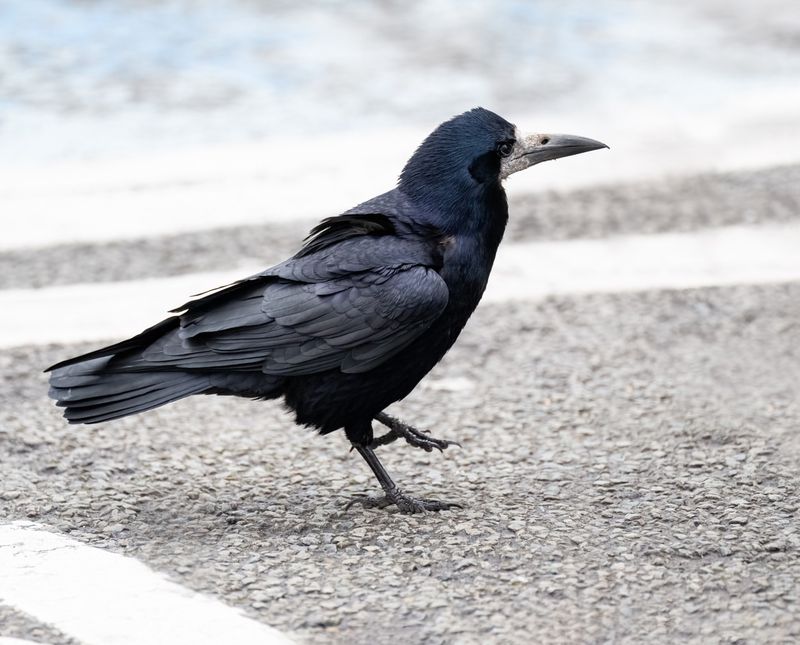
Rooks, with their bare greyish-white faces and glossy black plumage, are a familiar sight in the UK’s countryside. Part of the crow family, these birds are highly social, often seen in large colonies known as rookeries.
Their intelligence is evident in their ability to solve problems and use tools. Rooks are opportunistic feeders, enjoying a diet of insects, seeds, and small animals. Their cawing calls are a familiar sound in rural areas.
Nesting high in trees, they build large, communal nests. Watching a rookery in action is a fascinating experience, showcasing the complex social structure of these intelligent birds. Their presence is a reminder of the rich avian life in the British countryside.
23. Swallow
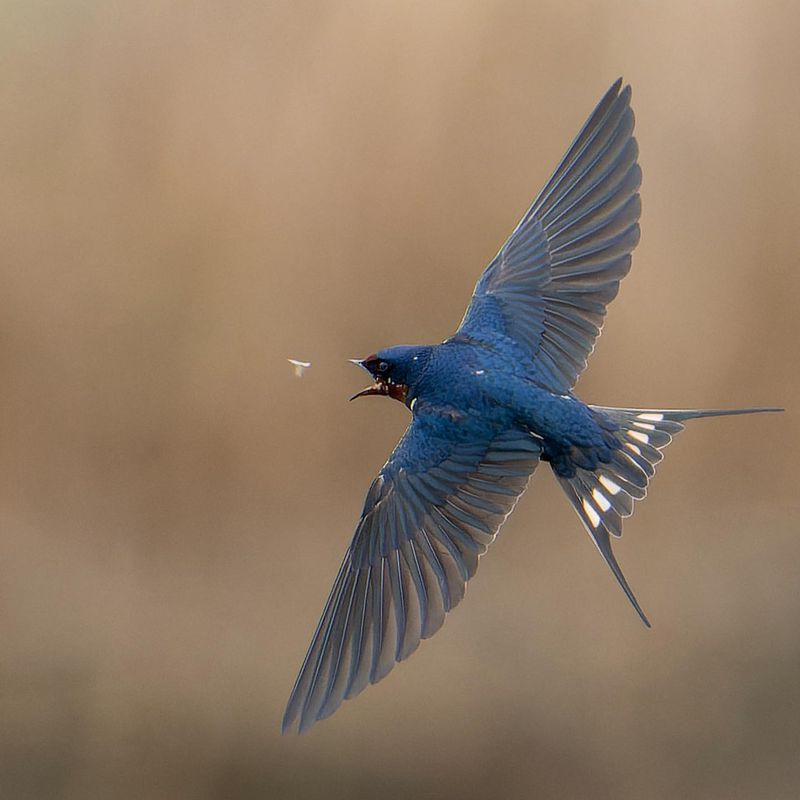
Swallows, with their graceful flight and distinctive forked tails, are harbingers of spring. Their arrival from Africa signals warmer days ahead, as they swoop over fields and meadows in search of insects.
These birds are agile fliers, often seen skimming the surface of ponds and rivers. Swallows are known for their social nature, often nesting in colonies, building mud nests under eaves and bridges. Their aerial acrobatics and cheerful chirps make them a delight to watch.
Despite their long migrations, swallows return to the same nesting sites year after year, showcasing their remarkable navigational skills. Observing swallows in flight is a joyful experience, celebrating the return of warmer seasons.
24. Mistle Thrush
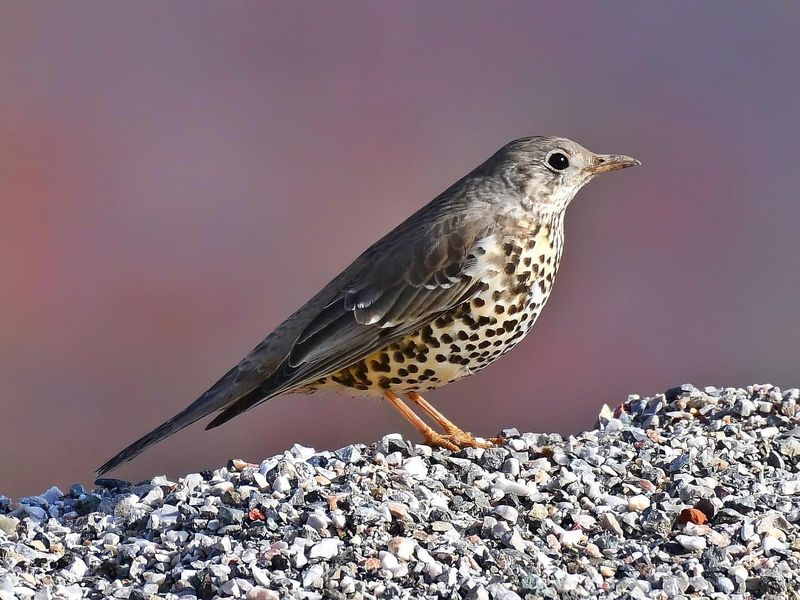
The Mistle Thrush, Britain’s largest thrush, is often heard before seen, thanks to its loud, fluty song. Its speckled breast and grey-brown upperparts make it a distinctive presence in woodlands and gardens.
These birds are named for their fondness for mistletoe berries, often seen guarding berry-laden trees. Mistle Thrushes are known for their boldness, fiercely defending their territory from intruders. They build their nests high in trees, using mud and grass for construction.
Observing their commanding presence and listening to their song can be a highlight of any woodland walk. Despite their size, they are agile, often seen flying swiftly between trees.
25. Barn Owl
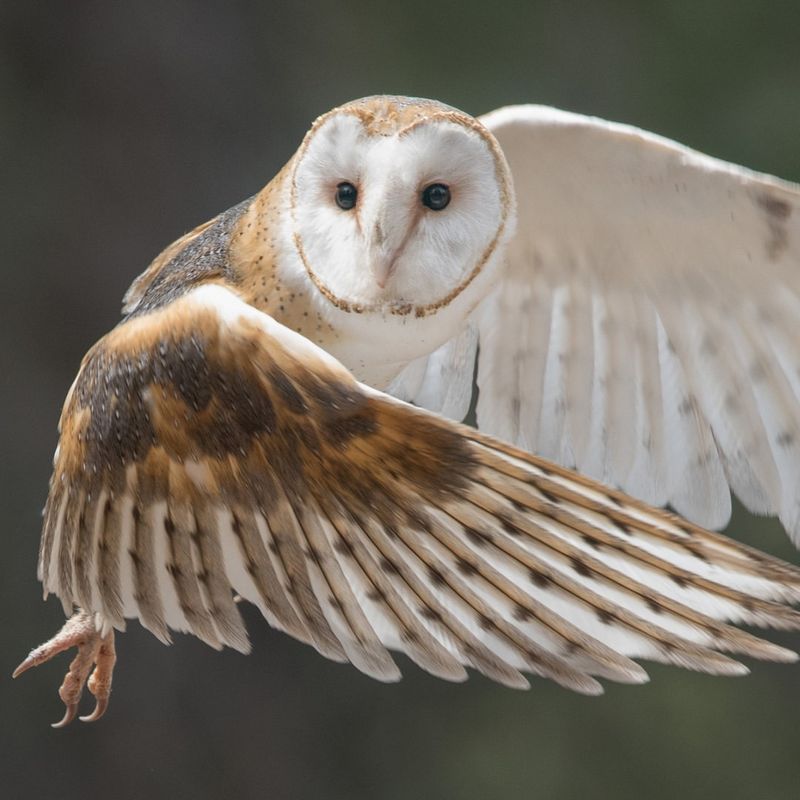
The ghostly Barn Owl, with its heart-shaped face and silent flight, is a mesmerizing sight in the British countryside. Often seen hunting at dusk, their white plumage glows in the fading light. These owls are skilled hunters, using their acute hearing to locate prey in the dark.
They feed primarily on small mammals, often seen swooping low over fields and meadows. Barn Owls nest in barns, old buildings, and hollow trees, preferring secluded locations. Conservation efforts have helped stabilize their numbers, allowing more people to enjoy their ethereal presence.
Observing a Barn Owl in flight is a magical experience, capturing the essence of rural Britain.
26. Kingfisher
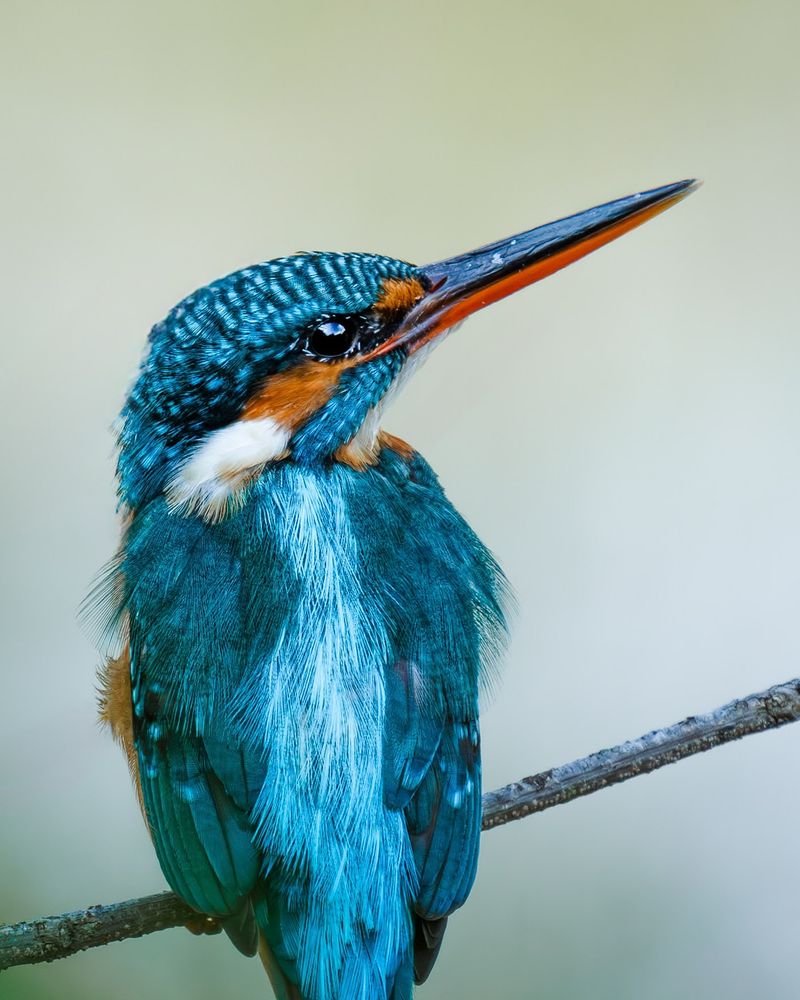
The Kingfisher, with its dazzling blue and orange plumage, is a jewel of Britain’s waterways. Often seen perched on branches overhanging rivers and streams, they are expert fishers, diving swiftly to catch their prey. Kingfishers are solitary birds, defending their territories vigorously.
Their presence is often marked by a distinctive, high-pitched call. These birds excavate burrows in riverbanks for nesting, showcasing their adaptability and resourcefulness. Spotting a Kingfisher requires patience, but the reward is worth the wait.
Their vibrant colors and swift movements bring a burst of life to any watery landscape. Witnessing a Kingfisher in action is a highlight for any birdwatcher.
27. Buzzard
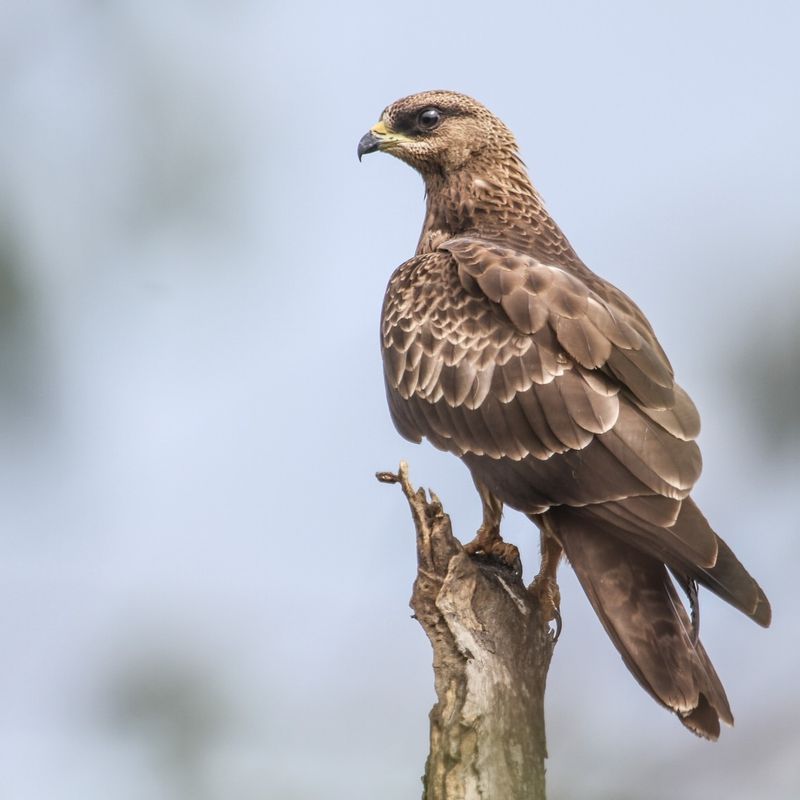
Buzzards, with their broad wings and fan-shaped tails, are a common sight soaring over British moorlands and countryside. Their distinctive mewing call can often be heard as they circle high above. These birds of prey are adaptable hunters, feeding on small mammals, birds, and carrion.
Their keen eyesight allows them to spot prey from great distances, making them efficient predators. Buzzards nest in trees or cliffs, often reusing old nests. Observing a Buzzard in flight is an awe-inspiring experience, showcasing their grace and power.
Their resurgence in the UK is a testament to successful conservation efforts, ensuring their presence for future generations.
28. Grey Heron
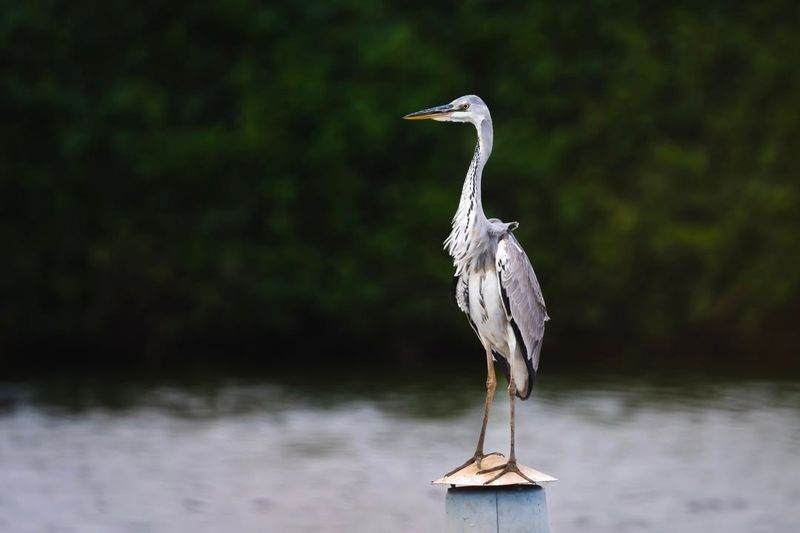
The Grey Heron, with its long legs and neck, is a familiar sight in wetlands across the UK. These stately birds are often seen standing motionless by the water’s edge, waiting to spear fish with their sharp beaks. Herons are solitary hunters, moving slowly and deliberately as they stalk their prey.
Despite their size, they are graceful in flight, with slow, measured wingbeats. They build large nests high in trees, often forming colonies known as heronries. Observing a Heron fishing or taking flight is a serene experience, offering a glimpse into the patience and precision of these remarkable birds.
29. Oystercatcher
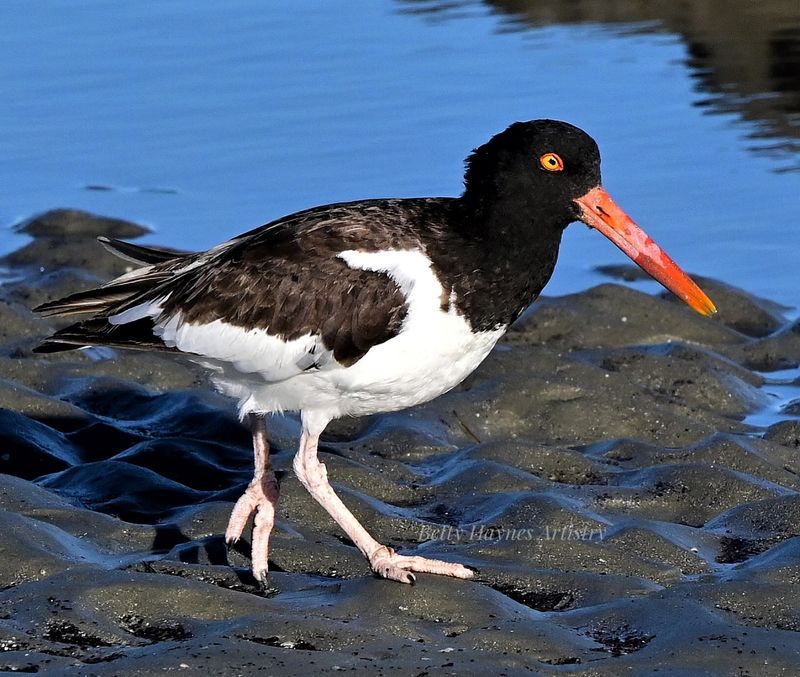
The Oystercatcher, with its striking black and white plumage and bright orange beak, is a familiar sight along Britain’s coasts. These birds are skilled foragers, using their strong beaks to pry open shellfish and dig for worms.
Oystercatchers are often found on rocky shores and estuaries, where they feed and nest. Their distinctive piping call is a common sound in coastal areas, marking their presence long before they are seen. These birds are highly territorial, defending their feeding and nesting sites vigorously.
Observing an Oystercatcher in action is a dynamic experience, revealing the determination and skill of these coastal residents. Their striking appearance and lively behavior make them a favorite among birdwatchers.
30. Cuckoo
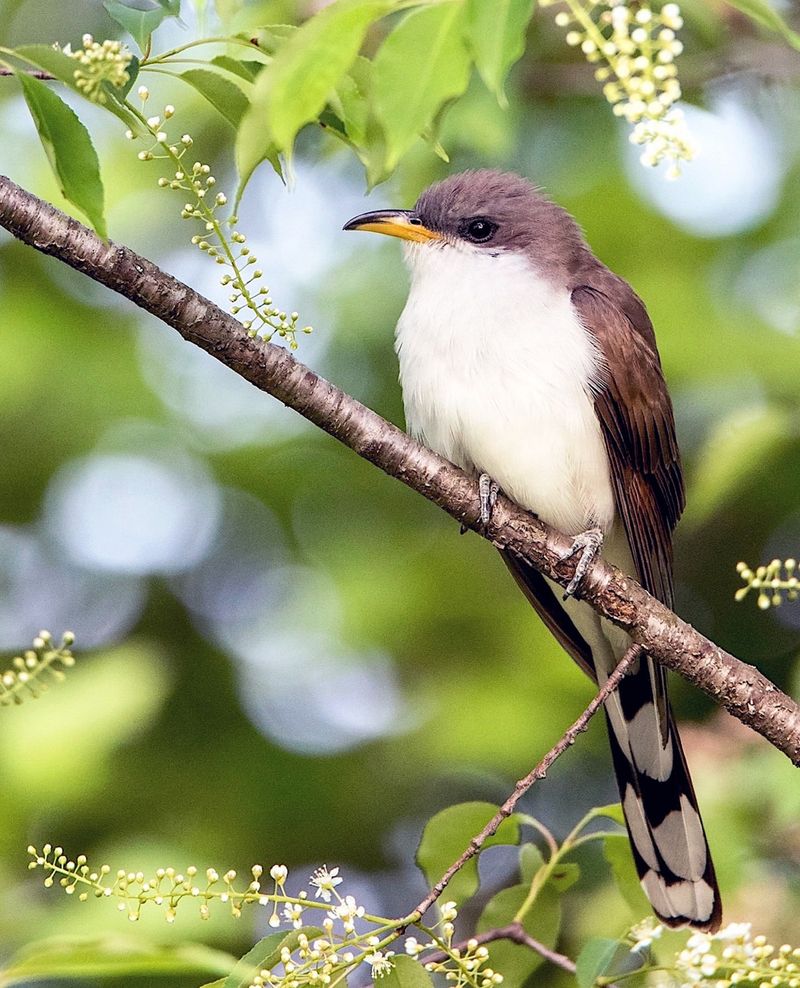
The Cuckoo is famous for its distinctive call, heralding the arrival of spring. With blue-grey plumage and barred underparts, it is often heard before it is seen. These birds are known for their unique breeding strategy, laying their eggs in the nests of other birds, leaving the host species to raise their young.
This behavior has fascinated observers for generations. Cuckoos are migratory, spending winters in Africa before returning to the UK in spring. Their presence is a reminder of the changing seasons, and hearing their call is often a cherished moment in the countryside.
Observing a Cuckoo adds an element of mystery and intrigue to any birdwatching outing.






